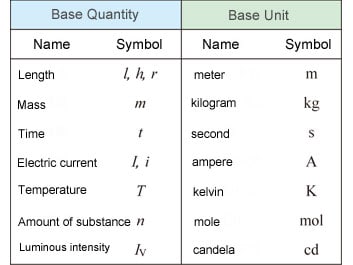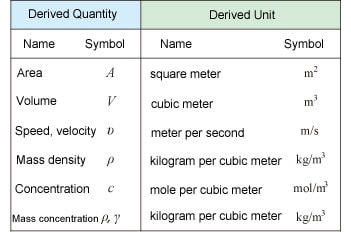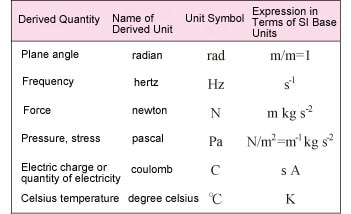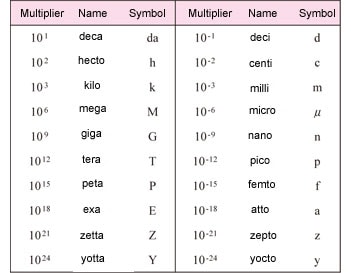About the SI System
What is the SI System?
The international system of units is designated by the French name "Le Système International d'Unités" (SI). It was formally adopted at the General Conference on Weights and Measures in 1960 to provide international rules governing a unit system for common use around the world. SI comprises base quantities and base units, derived quantities and derived units, and SI prefixes.
SI Base Units

Table 1: SI Base Quantities and Base Units
SI defines seven base quantities and the corresponding base units, listed in. Table 1
SI Derived Quantities and Derived Units

Table 2: Examples of SI Derived Quantities and Derived Units
All quantities can be described as derived quantities, which are combinations of base quantities. They are measured in derived units,defined as the product of powers of base units. Table 2 shows some examples of SI derived units.

Table 3: Examples of Derived Quantities Expressed as Named Units
In addition, SI approves named units and unit symbols for 22 derived units. Some of these are shown in Table 3.
SI Prefixes

Table 4: SI Prefixes
The use of a combination of the prefixes shown in Table 4 and SI units is approved to express quantities that are significantly larger or smaller than the size of the SI unit.
Important Points
- Insert a space between the number and unit. The space indicates the product of the numeric value and the unit. (Example: 10 MPa, 4.6 mm, 50 ℃)
- Liter and minute are non-SI units, but are approved for use with SI units. The unit symbol for liter is "L" or "l" (lowercase of "L"), but "L" is recommended. The use of italic "ℓ" is not permitted. The unit symbol for minute is "min". (Example: 1.0 mL/min, 20 mmol/L)


